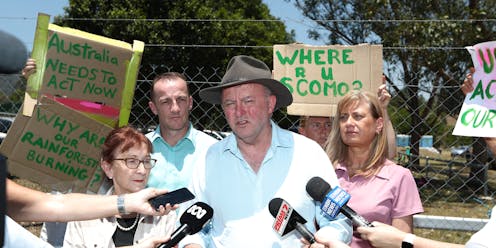Albanese to come clean on emissions targets, but a carbon price is still hush-hush
- Written by Richard Holden, Professor of Economics, UNSW

The Australian Labor Party is set to announce its target for cutting greenhouse gas emissions today.
At the 2016[1] and 2019[2] elections, Labor promised net zero emissions by 2050 and a cut of 45% on 2005 levels by 2030. Among the promises it adopted to get it there in 2019 was a target of 50% renewable energy by 2030.
But it lost those elections. So up to now Labor has refused to say what policies it will take to the 2022 election. We should know by the end of the day.
The Coalition’s position is clear – sort of.
Formally the government is sticking with its long-settled position of delivering a cut of 26-28% on 2005 levels by 2030 (as well as net zero by 2050).
But Prime Minister Scott Morrison is having a bet each way, by also saying the government will do better. As he said on November 15[3]:
We are going to achieve a 35% reduction in emissions by 2030. That is what we’re going to achieve. That is what actually matters. What matters is what you actually achieve. We are well above our target.
This leaves Labor, which has consistently taken a stronger stance than the Coalition, with three broad options.
Targets, predictions, safeguards
Option 1 is to match the 35% reduction but make it a formal target, not a prediction.
Option 2 is to go a little higher with a prediction – say 40% – and claim this is achievable given announced Labor policies such as electric vehicles and upgrading the electricity grid (“rewiring the nation”).
Option 3 is set a more ambitious target – perhaps 45%, as Labor did at the last election, along with a change to the so-called “safeguard mechanism” introduced by the Coalition[4] in 2016 as part of its alternative to a price on carbon.
The safeguard mechanism requires Australia’s largest greenhouse gas emitters to keep their net emissions below a certain cap.
Read more: The government's net-zero modelling shows winners, we've found losers[5]
At the 2019 election Labor proposed to cut the eligibility threshold for the cap from 100,000 to 25,000 tonnes of carbon dioxide a year, and extend it to more emitters.
The difference between now and 2019 is that this time the business community is behind the approach.
In fact, the Business Council of Australia’s climate plan[6], published in October 2021, is to do exactly this.







